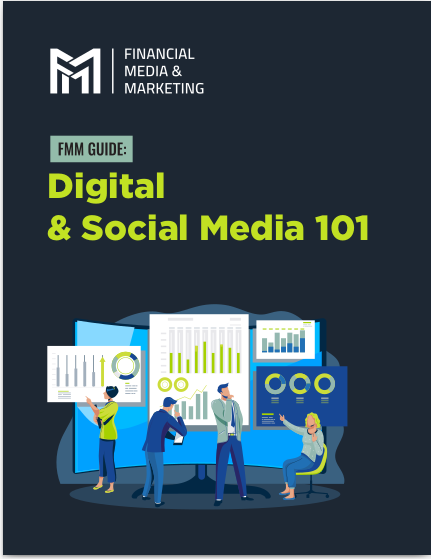Key Takeaways
-
A poor lead generation system isn’t just an inconvenience—it can silently undermine your business by exhausting your time, energy, and resources.
-
In 2025, fixing your lead funnel means aligning your strategy with evolving buyer behaviors, technology expectations, and realistic engagement timelines.
Understanding the Signs of a Broken Lead Generation System
A malfunctioning lead generation system doesn’t always look like failure. In fact, the signs are often subtle until the consequences become hard to reverse. You might still be getting leads, but not the kind that converts, or you may find yourself spending more time chasing than closing.
Common Indicators:
-
A high volume of low-quality leads
-
Increasing lead acquisition costs with no return
-
Long gaps between touchpoints and responses
-
Over-reliance on manual follow-ups
-
Leads falling off mid-funnel
-
No clear path from initial contact to conversion
These issues are particularly prevalent in systems that haven’t been updated in the last 12 to 18 months. Since 2025 demands higher personalization and faster responsiveness, legacy systems quickly become bottlenecks.
The Cost of Continuing Without Fixes
Ignoring inefficiencies in your lead system comes at a high price—financially and mentally.
Productivity Decline
Manual processes eat away at time you could spend building relationships or refining your service. Without automation or intelligent filtering, you risk burnout from repetitive, low-impact tasks.
Revenue Loss
A broken lead generation funnel can directly affect your bottom line. Lost leads, missed opportunities, and unoptimized messaging are expensive, especially when competition is fierce and client attention spans are short.
Brand Reputation
When leads feel neglected or improperly nurtured, it can create a perception of disorganization. That makes it harder to re-engage them down the road.
1. Evaluate Your Funnel From First Touch to Final Step
To fix what’s broken, you first need to know where it breaks.
Map the Journey:
-
Identify every stage a lead goes through
-
Label actions required at each step
-
Track time spent in each stage
-
Highlight drop-off points or delays
This mapping exercise often reveals bottlenecks that weren’t previously obvious. Maybe your initial email response is fast, but your follow-up call takes four days. Or perhaps leads are filling out a form that doesn’t segment them properly.
2. Redefine What Makes a Lead Worth Pursuing
In 2025, chasing every lead is a fast track to exhaustion. Instead, redefine what qualifies as a valuable lead in your business.
Consider:
-
Budget capacity
-
Timeline to decision
-
Level of authority to act
-
Problem awareness and urgency
-
Alignment with your service offering
Set clear qualification criteria and train your team (or tools) to filter accordingly. Not every interested person is a good fit, and that’s okay.
3. Align Content With Decision Stages
Too often, businesses offer one-size-fits-all messaging regardless of where the lead is in their journey.
Segment Your Messaging:
-
Awareness: Offer educational content like articles, short guides, or webinars
-
Consideration: Provide case studies, FAQs, or comparisons
-
Decision: Present offers, consultations, or pricing breakdowns
A misaligned message can confuse or repel a lead who might otherwise be a great fit. Evaluate whether your current content strategy accounts for these distinctions.
4. Automate Smartly, Not Blindly
Automation saves time, but only when implemented with intention. If you’re automating irrelevant messages or follow-ups with no personalization, you’re more likely to alienate than convert.
Where to Apply Automation:
-
Welcome sequences for new leads
-
Time-based follow-ups
-
Lead scoring updates
-
Calendar bookings and confirmations
Choose tools that adapt to real-time engagement, rather than sending generic messages on autopilot. It’s about enhancing the human touch, not replacing it.
5. Set Realistic Engagement Timelines
Leads in 2025 have more information at their fingertips, but that doesn’t always translate into faster decisions. Expect a longer nurturing period and multiple touchpoints.
Standard Timelines to Consider:
-
Initial response: within 24 hours
-
Nurturing cycle: 4 to 8 weeks on average
-
Conversion decision: may take 60 to 90 days depending on industry
Avoid setting arbitrary deadlines that don’t match your audience’s behavior. Instead, build a system that supports them until they’re ready.
6. Review Your Lead Sources and Channels
Not all traffic sources are created equal. Just because a platform drives traffic doesn’t mean it delivers qualified leads.
Analyze Channel Effectiveness:
-
Organic search vs. paid ads
-
Social platforms by engagement rate
-
Referral partnerships
-
Events or webinars
-
Direct outreach or cold campaigns
Double down on sources that consistently produce the most qualified leads and reduce or restructure those that don’t.
7. Fix the Follow-Up Gap
The space between lead capture and the first real conversation is where many systems fail.
Key Tactics:
-
Use instant confirmation messages
-
Pre-schedule a follow-up touchpoint
-
Offer an immediate value item (guide, checklist, or brief call)
-
Have a plan for unresponsive leads (3-5 follow-up attempts over 2 weeks)
In 2025, people expect responsiveness. Even a short delay can signal disinterest.
8. Build in Feedback Loops
You won’t know what’s truly broken unless you ask.
Gather Input From:
-
Leads who didn’t convert: ask why they chose not to proceed
-
Clients who did convert: ask what stood out in your approach
-
Internal teams: ask where the process breaks down
Use this feedback to optimize each touchpoint, and revisit it every 3 to 6 months.
9. Realign Your Team’s Roles and Workflows
If your team is still doing what worked in 2022, they’re likely missing opportunities now. The evolution in lead behavior requires adaptation in how responsibilities are assigned.
Update Your Workflow:
-
Assign lead qualification to specialists
-
Dedicate someone to content strategy or personalization
-
Ensure consistent communication standards across outreach efforts
Teams that evolve stay competitive, and those that don’t risk falling behind.
10. Track What Actually Matters
Don’t mistake volume for value. A high number of leads doesn’t mean your system is working well.
Prioritize Metrics Like:
-
Lead-to-client conversion rate
-
Time from capture to first engagement
-
Client lifetime value
-
Cost per qualified lead
Focus on insights that indicate long-term viability, not just surface-level volume. Quality metrics drive smarter decisions.
What to Do Next to Rebuild Your System
The first step to fixing your lead generation system is acknowledging it might need repair. Take time to audit your process from beginning to end and implement changes in 30-day increments.
Start with small wins: update your initial messaging, clean up your CRM, and re-examine your qualification criteria. Then move on to automation, content refinement, and team alignment. Aim for sustainable changes rather than sweeping overhauls.
When executed properly, your new system won’t just generate more leads—it will bring in the right ones, shorten decision timelines, and reduce your mental fatigue. The payoff isn’t just more revenue. It’s peace of mind.










